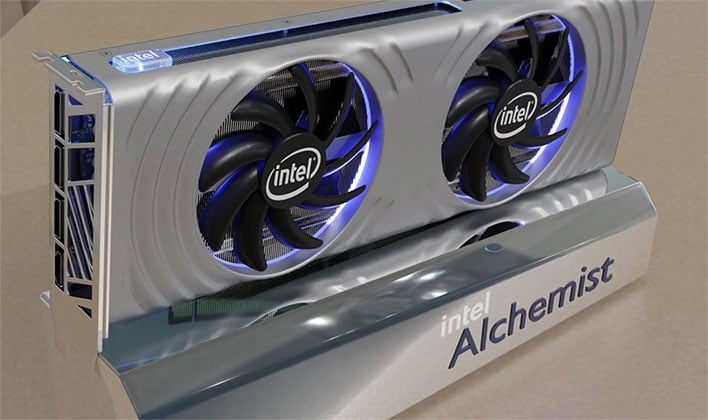Intel Explains Mystery Of The Rare 5th Display Output On Arc Alchemist Graphics Cards

Have you ever noticed that basically all extant mid-range and high-end graphics cards support four display outs? Why has that become the standard? Who knows. It does seem to be the accepted configuration for the last few generations of GeForce and Radeon cards, though.
Vendors building graphics cards based on Intel's Arc Alchemist GPUs could buck the trend, as it turns out that Intel's "DG2" actually has five outputs. This nifty little detail comes from a message on the dri-devel mailing list by Matt Roper from Intel. He clarifies that "DG2 supports a 5th display output which the hardware refers to as 'TC1' even though it isn't a Type-C output."
Of course, the GPU itself having five outputs doesn't mean we will actually see graphics cards with five outputs. All you need to do is look at Intel motherboards for the last decade. Ever since at least Ivy Bridge, if not before, Intel's integrated graphics have supported three display pipes, with the latest Xe-based hardware supporting four. Despite that, you'll almost never see a motherboard with more than two display connections—and if you do, it's almost a guarantee that the third one will be a VGA port. Of course motherboards also have IO bracket real estate to take into consideration as well, which might be at a premium depending on that design and board type.
All of the Alchemist samples that we've seen so far have only had four connectors on them. To a certain degree, that's probably down to simply having physical space to put five connectors on the back of a graphics card; doing so all-but requires the manufacturer to give up some real panel space that could be otherwise used for ventilation.

None of this matters until the cards hit store shelves, though. Intel has been a little quiet on the topic of its desktop discrete GPUs as of late. The products made a very quick cameo in the company's CES 2022 showcase, and its initial launch window of Q2 2022 is fast approaching. A fresh injection of new GPUs is exactly the sort of thing we need to ease the graphics card shortage, so hopefully Intel gets things sorted sooner than later.

